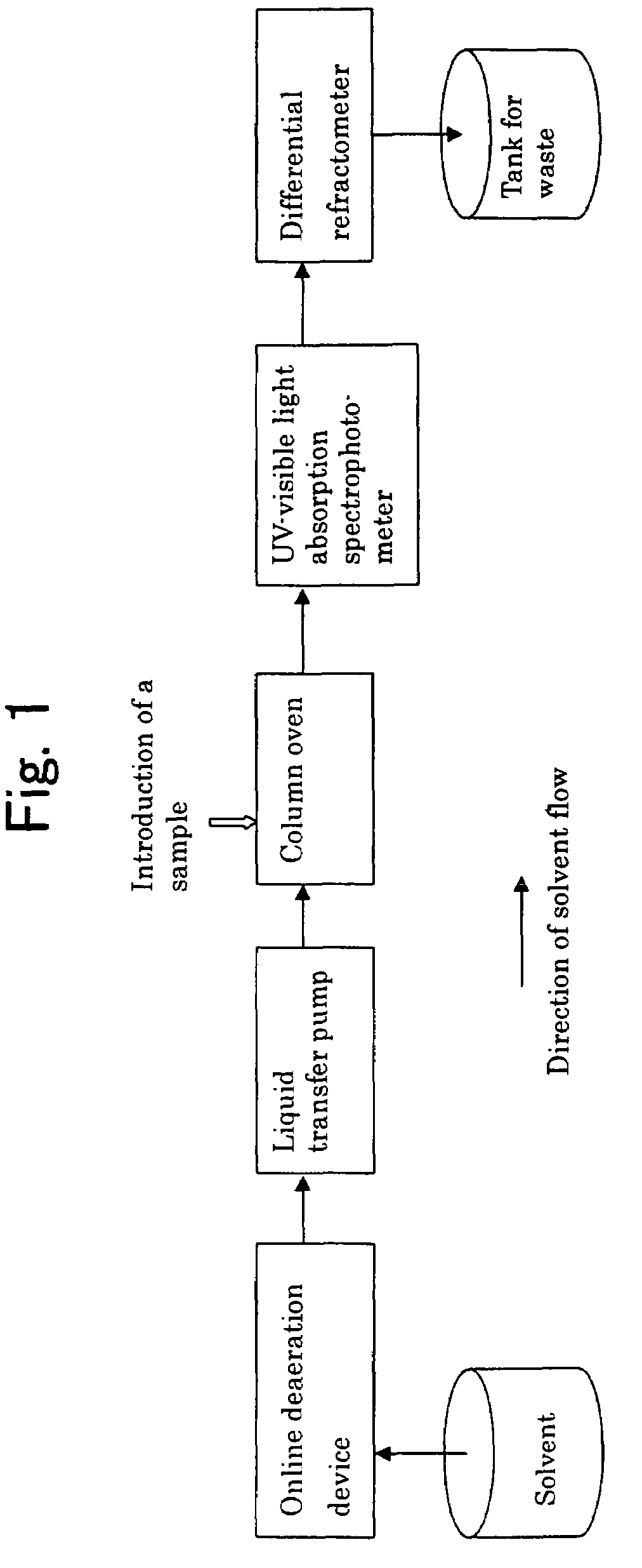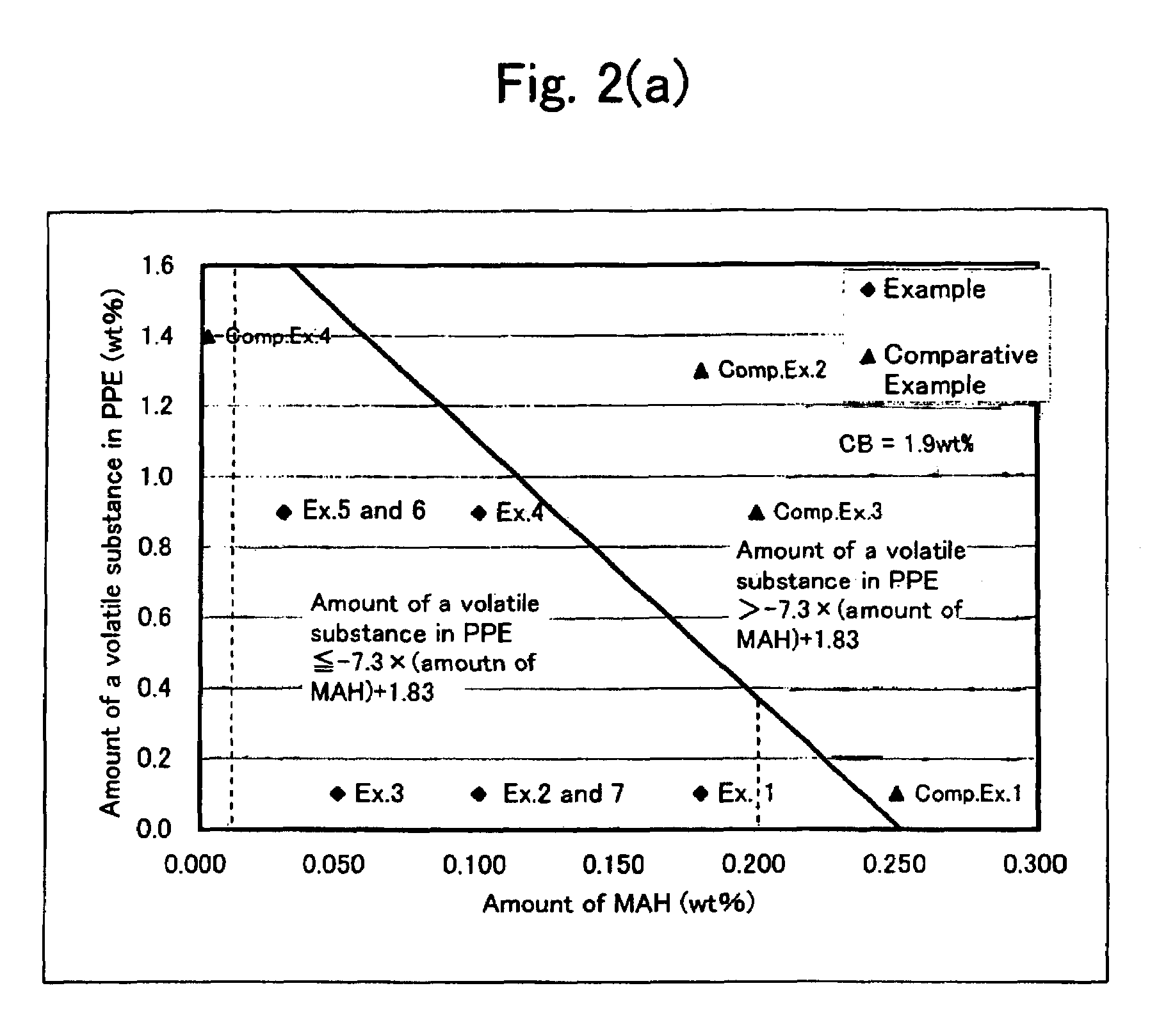Conductive resin composition and molded object
a technology of conductive resin and molded objects, which is applied in the direction of non-conductive materials with dispersed conductive materials, removable external protective coverings, tyre parts, etc., can solve the problems of poor moldability of polyphenylene ether, likely to occur, and build-up of dies
- Summary
- Abstract
- Description
- Claims
- Application Information
AI Technical Summary
Benefits of technology
Problems solved by technology
Method used
Image
Examples
examples 1 to 6 , 8 and 9
EXAMPLES 1 to 6, 8 and 9, AND COMPARATIVE EXAMPLES 1 to 6
[0283]A conductive resin composition in the form of pellets was produced using a twin-screw extruder (ZSK -58MC, manufactured and sold by Coperion Werner & Pfleiderer GmbH & Co. KG, Germany) which had one inlet at an upstream portion thereof (hereinafter, referred to as “upstream inlet”) and another inlet at a downstream portion thereof (hereinafter, referred to as “downstream inlet”). Specifically, polyphenylene ether (B), rubbery polymer (C) and modifier compound (E) (compatibility agent) were fed into the twin-screw extruder through the upstream inlet of the extruder, thereby melt-kneading the resultant mixture, while feeding a masterbatch (PA66 / CB-MB or PA66 / CNT-MB) containing polyamide 6,6 (A) and conductive carbonaceous material (D) (a conductive carbon black or a conductive carbon fibril) into the twin-screw extruder through the downstream inlet, thereby obtaining a conductive resin composition in the form of pellets. T...
example 7
[0288]A conductive resin composition in the form of pellets was produced in substantially the same manner as in Example 1 except that the twin-screw extruder (ZSK-58MC, manufactured and sold by Coperion Werner & Pfleiderer GmbH & Co. KG, Germany) had one upstream inlet and two downstream inlets (1) and (2), and that polyphenylene ether (B), rubbery polymer (C) and modifier compound (E) (compatibility agent) were fed into the twin-screw extruder through the upstream inlet of the extruder, thereby melt-kneading the resultant mixture, while feeding a masterbatch (PA / CB-MB) containing polyamide 6,6 (A) and conductive carbonaceous material (D) (conductive carbon black) into the extruder through the downstream inlet (1) (positioned between the upstream inlet and the downstream inlet (2)) and feeding wollastonite into the extruder through the downstream inlet (2), thereby obtaining pellets of a resin composition containing polyamide 6,6 (component (A)), polyphenylene ether (B), rubbery pol...
PUM
| Property | Measurement | Unit |
|---|---|---|
| molecular weight distribution | aaaaa | aaaaa |
| molecular weight distribution | aaaaa | aaaaa |
| molecular weight distribution | aaaaa | aaaaa |
Abstract
Description
Claims
Application Information
 Login to View More
Login to View More - R&D
- Intellectual Property
- Life Sciences
- Materials
- Tech Scout
- Unparalleled Data Quality
- Higher Quality Content
- 60% Fewer Hallucinations
Browse by: Latest US Patents, China's latest patents, Technical Efficacy Thesaurus, Application Domain, Technology Topic, Popular Technical Reports.
© 2025 PatSnap. All rights reserved.Legal|Privacy policy|Modern Slavery Act Transparency Statement|Sitemap|About US| Contact US: help@patsnap.com



